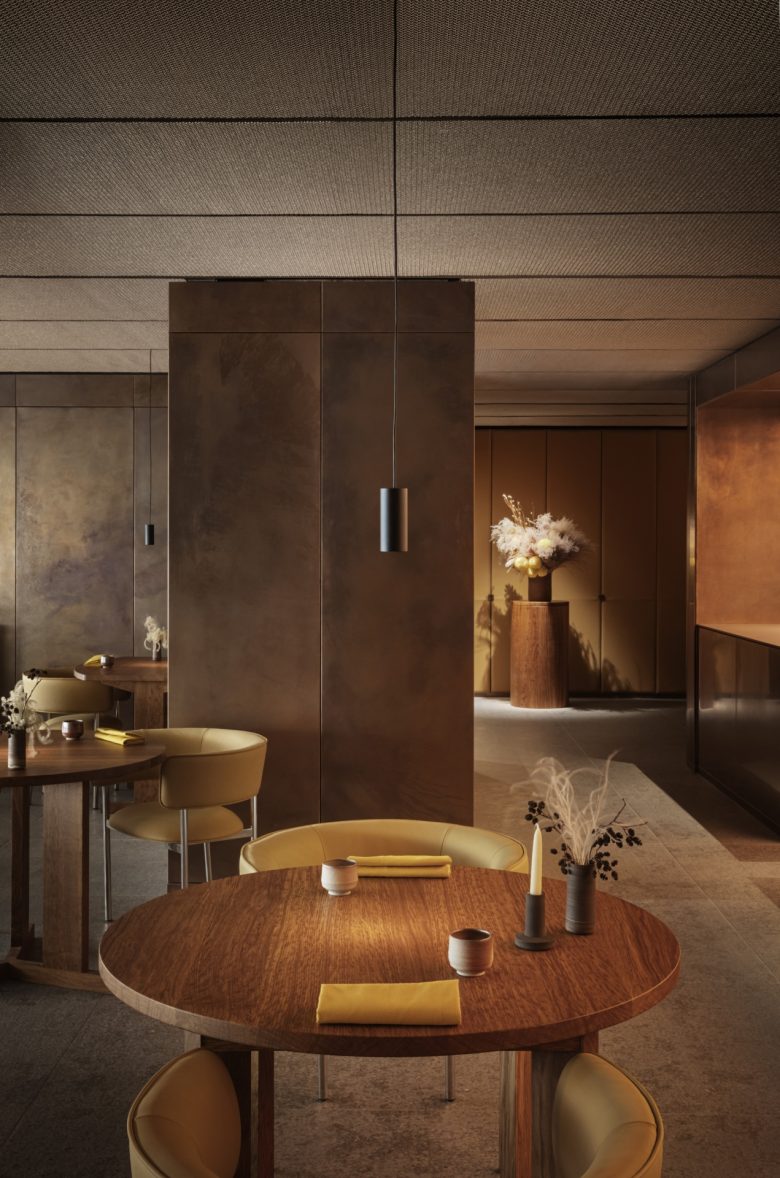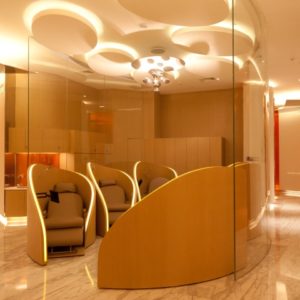

Located at London’s creative hub 180 The Strand, two-Michelin-star restaurant Ikoyi’s sonorous design is the backdrop to an innovative gastronomy experience.
Key features
Ikoyi occupies 150-sq-m of London’s 180 The Strand, a 1976-built brutalist building turned cultural space. Danish architecture practice Studio David Thulstrup designed the restaurant with a simple, material-forward approach. Using a material palette of copper, stone, steel mesh, leather and oak, the restaurant’s interior was aligned with its ‘global modernism’ approach to gastronomy which focuses on using micro-seasonal, high-quality ingredients. ‘This idea of intensity and warmth and a sort of cultural ambiguity have been the driving force of the inspiration,’ says David Thulstrup. Oxidized copper sheets finished in beeswax line the restaurant’s walls and entrance while flamed and brushed Gris Catalan limestone covers the floors. Ginger-coloured leather upholsters the banquettes and wall panels providing warmth and tactility in contrast with the hard metal and stones used throughout. Stainless steel mesh covers ceilings and partially shades windows to soften the interior’s natural light. The 26-seat fine dining restaurant has an open kitchen, a terrace, and an additional six-seat private dining area.
FRAME’s take
The announcement that the world’s best – and arguably most famous – restaurant, Noma, will close its doors to diners in 2024 has shaken up the fine dining industry. Its founder René Redzepi called the status quo of operations ‘unsustainable’. This development is certainly a point of reflection for Noma’s contemporaries, institutions that have made tasting menus costing hundreds per cover the norm, perhaps putting them – in their current form– on the endangered list. What the design of Ikoyi shows –Thulstrup also coincidentally designed Noma – is that such spaces still have a place, especially if they exist in a viable ecosystem.
The restaurant’s location in London’s 180 The Strand, a luxury hub for creatives comprising co-working, exhibition, wellness, hospitality and retail facilities, puts it within the context of other like-minded ventures and people. Its seemingly simple yet thorough design makes it evident to diners that the true experience is to be had at the table, the environment not contributing any noise to the innovative meal. Though fine dining may encounter an identity crisis in the wake of Noma’s closure, it is clear that restaurant operators can evolve with their audiences’ tastes using spatial design as a tool.
Designed by Studio David Thulstrup
Photography by Irina Boersma, César Machado






Add to collection










